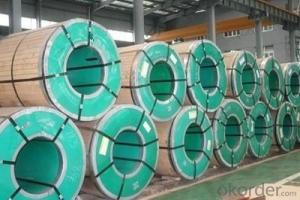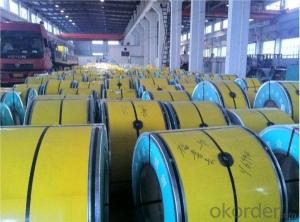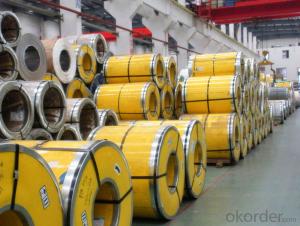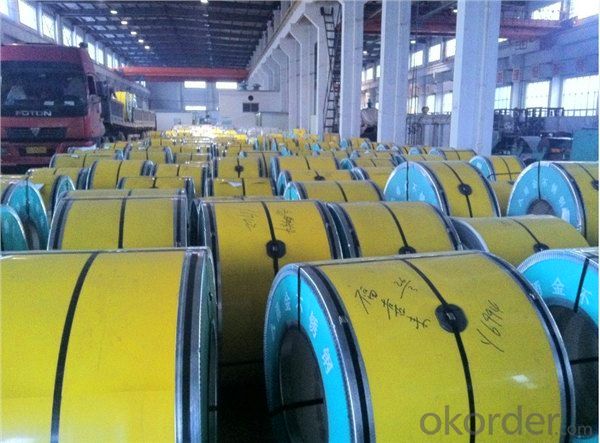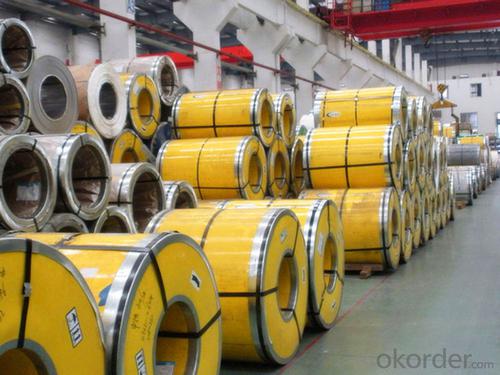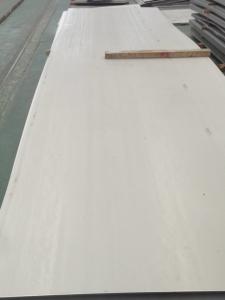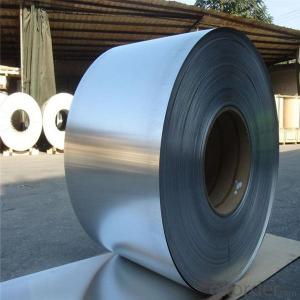Stainless Steel Coil and Sheet Hot Rolled Cold Rolled 304/ 304L/ 316 / 316L
- Loading Port:
- China main port
- Payment Terms:
- TT OR LC
- Min Order Qty:
- 20 m.t.
- Supply Capability:
- 4000 m.t./month
OKorder Service Pledge
OKorder Financial Service
You Might Also Like
CHINA GOOD COLD ROLLED STAINLESS STEEL COIL AND SHEET 304/316/316L
Product Details:
CR Stainless Steel Coil 304 316 316L | |
1.Standard : | JIS AISI ASTM |
2.Thickness : | 0.3-3.0mm |
3.Width: | 100-1500mm |
4.Length: | Depend on the weight |
5.MOQ: | 20ton |
6.Main Application | Building, decoration, tableware, kitchen, industrial, auto parts, etc. |
316 Chemical Composition | ||||||
C | Si | Mn | Cr | Ni | S | P |
≤0.07 | ≤1.0 | 2.00 | 17.0~19.0 | 8.0~11.0 | ≤0.03 | ≤0.035 |
Surface Treatment
2B | The surface brightness and flatness of 2B is better than 2D. Then through a special surface treatment to improve its mechanical properties, 2B could nearly satisfy comprehensive uses. |
NO.3 | Polished with abrasive belt of git#100#200,have better brightness with discontinuous coarse strait, used as inner and external ornaments for building, electrical appliances and kitchen utensils etc. |
NO.4 | Polished with abrasive belt of grit#150#180,have better brightness with discontinuous coarse stria, but thinner than NO.3, are used as bathtub buildings inner and external ornaments electrical appliances kitchen utensils and food processing equipment etc |
HL | Polished with abrasive belt of grit#150#320 on the NO.4 finish and has continuous streaks, mainly used as buildings ornaments elevators, door of building, frontal plate etc. |
BA | Cold rolled, bright annealed and skin-passed, the product have excellent brightness and good reflexivity like mirror, kitchen apparatus, ornament etc |
8K | The product have excellent brightness and prefer reflexivity can |
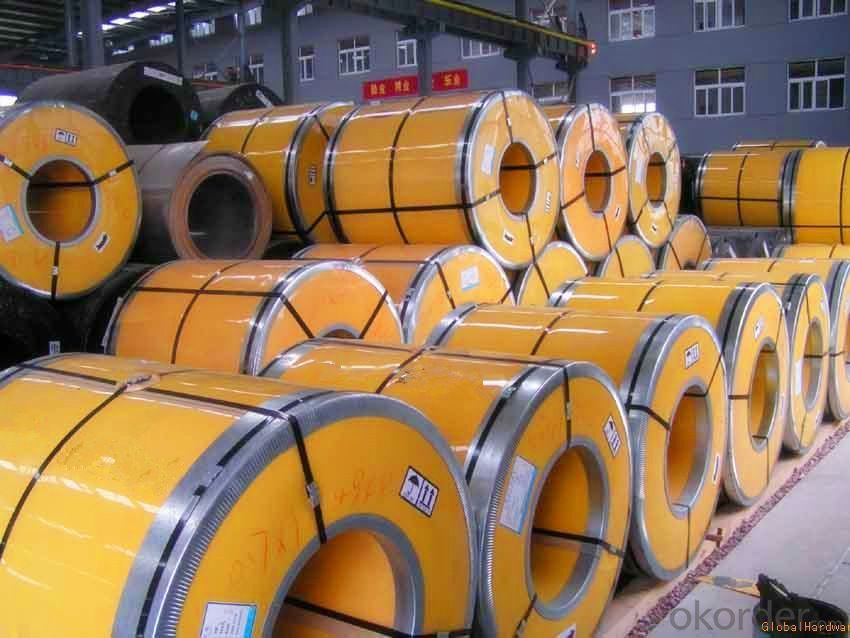

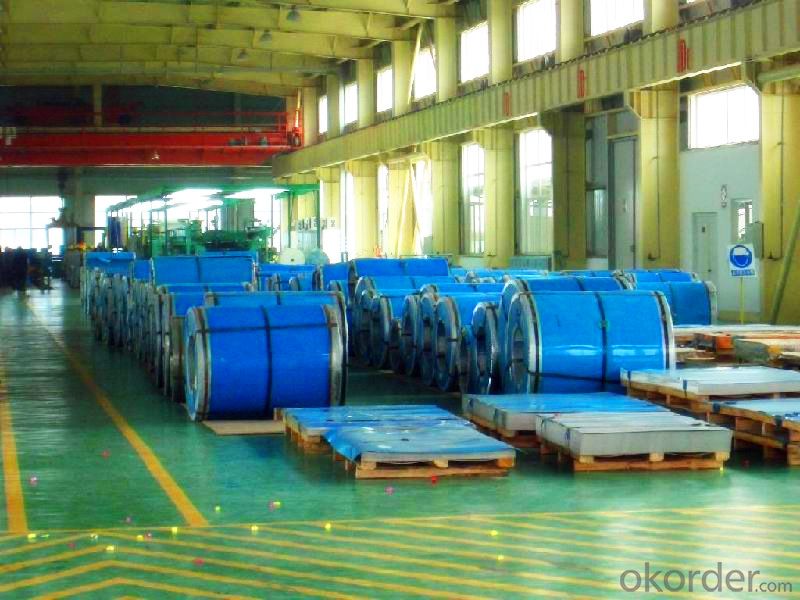
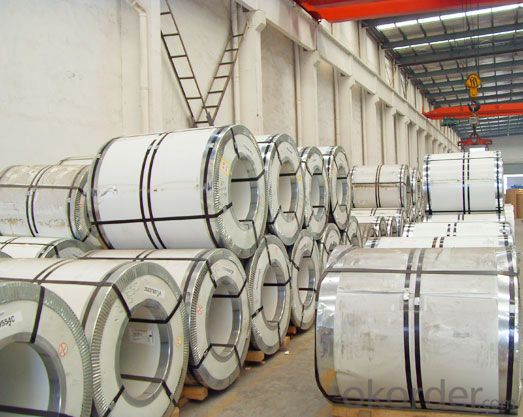
- Q: What is the typical lead time for stainless steel strip production?
- The typical lead time for stainless steel strip production can vary depending on various factors such as the complexity of the order, the quantity required, and the current market conditions. Generally, lead times can range from a few weeks to several months. For standard stainless steel strip production, where the specifications and quantity required are within normal limits, the lead time is typically shorter. In such cases, it may take around 4-8 weeks for the production process, including material sourcing, processing, and quality control, to be completed. However, for customized or specialty stainless steel strip production, which involves specific dimensions, finishes, or unique requirements, the lead time can be longer. It may require additional time for design consultations, tooling development, and testing, resulting in lead times of 2-6 months or even more. External factors such as supply and demand dynamics, availability of raw materials, and production capacities can also influence lead times. During periods of high demand or when there are supply chain disruptions, lead times may increase due to increased order volumes and potential delays in material sourcing. It is important to communicate with the stainless steel strip manufacturer or supplier to get an accurate estimate of the lead time based on your specific requirements. They will consider various factors and provide you with a more precise timeline for production and delivery.
- Q: How are stainless steel strips used in construction?
- Stainless steel strips are commonly used in construction for various purposes such as framing, structural support, and finishing touches. They are often utilized as reinforcement in concrete structures, providing additional strength and durability. Stainless steel strips are also employed in the fabrication of building components like beams, columns, and lintels due to their resistance to corrosion and high strength-to-weight ratio. Additionally, these strips are utilized for cladding and decorative purposes, adding a sleek and modern aesthetic to architectural designs.
- Q: Are stainless steel strips suitable for springs?
- Depending on the specific application and requirements, stainless steel strips can indeed be suitable for springs. This is because stainless steel is well-known for its exceptional strength, resistance to corrosion, and overall durability. Consequently, it is a favored choice for a wide range of industrial and commercial uses. Springs crafted from stainless steel are particularly advantageous in environments that entail high levels of humidity, temperature fluctuations, and exposure to chemical substances. To achieve the desired spring properties, such as flexibility, elasticity, and load-bearing capacity, it is crucial to carefully select the appropriate grade and thickness of the stainless steel strip. It is highly recommended to seek advice from a materials engineer or a spring manufacturer to ascertain the most suitable stainless steel strip for a particular spring application.
- Q: Can 111 stainless steel strips be etched or engraved for customization?
- Yes, 111 stainless steel strips can be etched or engraved for customization. Stainless steel is a versatile material that can be easily etched or engraved using various techniques such as chemical etching, laser engraving, or mechanical engraving. These methods allow for precise and detailed customization on the stainless steel strips, providing endless possibilities for personalization or branding purposes. It is important to consult with a professional engraver or etcher to ensure the desired results and to determine the most suitable technique for the specific customization needs.
- Q: Can 111 stainless steel strips be hardened through heat treatment?
- 111 stainless steel strips can indeed be hardened through heat treatment. It is customary to subject stainless steel strips to heat treatment in order to enhance their mechanical properties, such as hardness and strength. The process of heat treatment involves heating the steel strips to a specific temperature referred to as the austenitizing temperature, followed by rapid cooling known as quenching. This quenching phase aids in the conversion of the steel's austenitic structure into a tougher and more durable martensitic structure. Following quenching, the steel strips may undergo additional tempering, which necessitates reheating the steel to a lower temperature to decrease brittleness and improve toughness. In summary, heat treatment is a highly effective technique for hardening stainless steel strips, including those composed of 111 stainless steel.
- Q: What is the maximum temperature that stainless steel strips can withstand?
- The maximum temperature that stainless steel strips can withstand depends on the specific grade of stainless steel. However, most stainless steel alloys can withstand temperatures up to 1500 degrees Fahrenheit (815 degrees Celsius) before significant structural changes occur.
- Q: Are stainless steel strips resistant to impact and vibration?
- Yes, stainless steel strips are generally resistant to impact and vibration due to their high strength and durability.
- Q: Can stainless steel strips be used in architectural railing systems?
- Yes, stainless steel strips can be used in architectural railing systems. Stainless steel is a popular material choice for architectural applications due to its durability, corrosion resistance, and aesthetic appeal. Stainless steel strips can be formed into various shapes and sizes to meet the design requirements of the railing system. Additionally, stainless steel is low maintenance and can withstand harsh environmental conditions, making it an ideal material for outdoor applications. Overall, stainless steel strips provide a strong and visually pleasing option for architectural railing systems.
- Q: Can stainless steel strips be used in architectural roofing systems?
- Yes, stainless steel strips can be used in architectural roofing systems. Stainless steel is a durable and corrosion-resistant material, making it suitable for use in exterior applications such as roofing. It offers strength, longevity, and a modern aesthetic, making it a popular choice in architectural designs.
- Q: What are the common uses of stainless steel strips in the oil and gas industry?
- Stainless steel strips are widely used in the oil and gas industry due to their exceptional properties and durability. Some common uses of stainless steel strips in this industry include: 1. Tubing and pipelines: Stainless steel strips are used to manufacture tubing and pipelines for the transportation of oil and gas. The corrosion resistance of stainless steel ensures that these components can withstand the harsh and corrosive environments commonly found in oil and gas extraction and transportation. 2. Heat exchangers: Stainless steel strips are utilized in the construction of heat exchangers, which are essential for regulating temperatures in various processes within the oil and gas industry. Stainless steel's high heat resistance and thermal conductivity make it an ideal choice for these applications. 3. Pressure vessels: Stainless steel strips are often used to construct pressure vessels, which are crucial for storing and transporting pressurized gases and liquids. Stainless steel's strength and resistance to corrosion and high pressure make it a popular material for these demanding applications. 4. Offshore platforms and subsea equipment: Stainless steel strips are widely used in the construction of offshore platforms and subsea equipment, such as pipes, valves, and fittings. These components must withstand the constant exposure to seawater and harsh weather conditions, making stainless steel an excellent choice due to its corrosion resistance and strength. 5. Downhole equipment: Stainless steel strips are utilized in the manufacturing of downhole equipment, including casing and tubing strings, which are essential for drilling and extracting oil and gas from the ground. Stainless steel's resistance to corrosion and high temperature ensures the longevity and reliability of these components in the challenging downhole environment. In summary, stainless steel strips are extensively used in the oil and gas industry for their corrosion resistance, strength, heat resistance, and durability. They play a vital role in various applications, such as tubing, pipelines, heat exchangers, pressure vessels, offshore equipment, and downhole equipment, ensuring the safe and efficient extraction, transportation, and processing of oil and gas.
Send your message to us
Stainless Steel Coil and Sheet Hot Rolled Cold Rolled 304/ 304L/ 316 / 316L
- Loading Port:
- China main port
- Payment Terms:
- TT OR LC
- Min Order Qty:
- 20 m.t.
- Supply Capability:
- 4000 m.t./month
OKorder Service Pledge
OKorder Financial Service
Similar products
Hot products
Hot Searches
Related keywords
